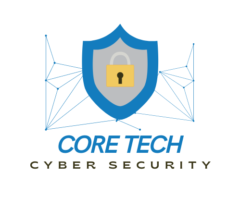As businesses increasingly adopt Software as a Service (SaaS) solutions, ensuring robust security measures becomes paramount. With evolving cyber threats and regulatory requirements, following best practices for SaaS security is crucial to protecting your data and maintaining operational integrity. Here are the best practices for SaaS security in 2024:
1. Implement Multi-Factor Authentication (MFA)
Multi-Factor Authentication (MFA) adds an extra layer of security by requiring users to provide multiple forms of verification before accessing applications.
- Use MFA Across All Accounts: Implement MFA for all user accounts and admin privileges to enhance security.
- Leverage Authentication Apps: Use authentication apps like Google Authenticator or Authy for secure, easy-to-use MFA solutions.
Learn how to set up MFA to protect your SaaS applications from unauthorized access.
2. Regularly Update and Patch SaaS Applications
Keeping your SaaS applications up-to-date is essential to protect against vulnerabilities and security threats.
- Monitor Vendor Updates: Stay informed about the latest updates and patches from your SaaS providers.
- Apply Updates Promptly: Ensure timely application of updates to address newly discovered vulnerabilities.
Explore update management solutions to keep your SaaS applications secure.
3. Encrypt Sensitive Data
Encryption is crucial for safeguarding sensitive data, both in transit and at rest.
- Use TLS/SSL for Data in Transit: Ensure your SaaS applications use secure protocols like TLS or SSL for data transmission.
- Encrypt Data at Rest: Implement encryption to protect stored data from unauthorized access.
Find encryption tools to secure your data effectively.
4. Conduct Regular Security Audits and Assessments
Regular security audits and assessments help identify vulnerabilities and ensure compliance with security policies.
- Perform Vulnerability Scans: Regularly scan your SaaS applications for vulnerabilities and address any issues.
- Conduct Penetration Testing: Engage in periodic penetration testing to simulate attacks and uncover potential weaknesses.
Schedule security audits to maintain a strong security posture.
5. Manage and Monitor User Access
Effective access management ensures that only authorized users have access to your SaaS applications.
- Implement Role-Based Access Control (RBAC): Assign roles and permissions based on user responsibilities.
- Monitor User Activity: Use tools to track and review user activity to detect unusual behavior.
Learn about access management solutions to enhance user access control.
6. Backup Your Data Regularly
Data backups are essential for recovery in case of data loss or breaches.
- Automate Backups: Schedule regular automated backups to ensure data is consistently protected.
- Test Backup and Recovery: Regularly test your backup and recovery processes to ensure they work effectively.
Explore data backup solutions to safeguard your business data.
7. Implement a Comprehensive Security Policy
A well-defined security policy helps guide and enforce security practices within your organization.
- Develop Security Guidelines: Create guidelines for data protection, access control, and incident response.
- Communicate Policies: Ensure all employees are aware of and understand the security policies.
Create and manage security policies to align with best practices.
8. Choose Reputable SaaS Providers
Selecting a SaaS provider with a strong security track record is crucial for protecting your data.
- Evaluate Security Certifications: Choose providers with relevant certifications such as ISO 27001 or SOC 2.
- Review Security Features: Ensure the provider’s security features align with your organization’s needs.
Find reliable SaaS providers to ensure robust security for your applications.
9. Educate and Train Employees
Employee awareness and training are critical components of a strong security posture.
- Conduct Security Training: Provide regular training on security best practices, phishing awareness, and data protection.
- Promote a Security Culture: Encourage a culture of security awareness and vigilance among employees.
Explore employee training programs to improve security awareness in your organization.
10. Implement Incident Response and Recovery Plans
An incident response plan helps you manage and mitigate the impact of security incidents.
- Develop an Incident Response Plan: Outline procedures for detecting, responding to, and recovering from security incidents.
- Test and Update Plans: Regularly test and update your incident response plan to address evolving threats.
Learn about incident response planning to effectively manage security incidents.
Conclusion
Adhering to these best practices for SaaS security in 2024 will help you safeguard your applications, data, and overall business operations. From implementing MFA and encryption to conducting regular audits and managing user access, these strategies are essential for maintaining a robust security posture. Prioritize these practices to protect your organization and stay ahead of emerging threats.
